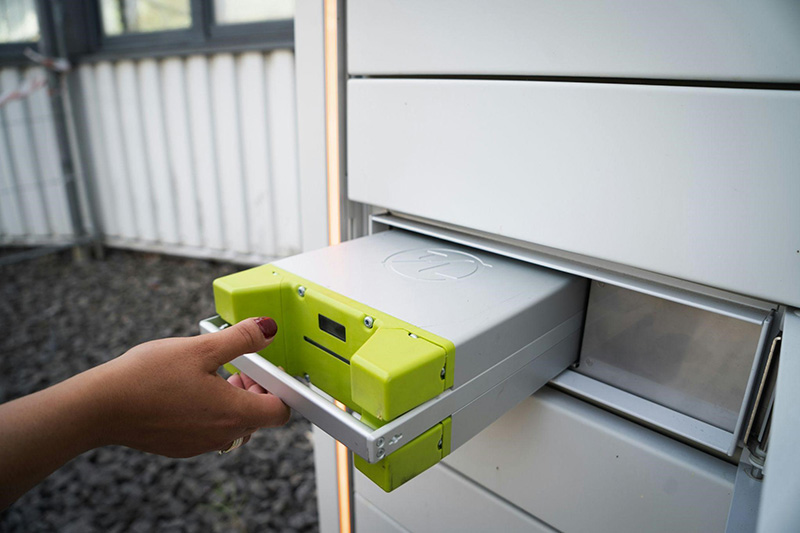Mitigating Risks: Best Practices for Transporting Lithium-Ion Batteries
Lithium-ion batteries are everywhere, powering our phones to our electric cars. They're very useful, but moving them can be risky. If not handled properly they can catch fire or get damaged, which means it's extremely important for businesses to play it safe by ensuring they are compliant with regulations. Giving staff the proper training so they know what they're doing when moving lithium-ion batteries around safely is also key. It's all about keeping everyone - employees, customers, and the environment - out of harm's way.

Understanding the risks
Lithium-ion batteries are like little heat machines, and sometimes they get so hot they can even burst into flames, especially when they're on the move. If they get bumped around or left in very hot or cold places, that's when trouble can start. It can cause serious damage or hurt someone if things go wrong. So, it's important to store batteries safely and handle them with care and keep them in the right conditions to avoid any fiery mishaps or accidents.
Environmental considerations
What's more, it's not just about keeping people safe; it's also about protecting the environment. Properly recycling batteries and using eco-friendly packaging materials show your commitment to protecting the environment. Battery recycling prevents harmful substances from entering the air and water, while eco-friendly packaging reduces waste and pollution. By taking these steps, you're doing your part to keep our planet healthy for future generations.
Why compliance with regulations matters
Businesses must adhere to the rules set by groups like the European Agreement and the International Air Transport Association. This means you need to ensure batteries are sorted into the right categories, packed up safely, and your staff know what they're doing. By remaining compliant, businesses can keep things running smoothly and avoid any bumps in the road when transporting batteries.
Why training staff is key
Training is more than just remembering rules - it's about knowing why they matter and how to use them. Good training helps staff see problems coming, deal with emergencies, and stay compliant. It's important to make sure everyone knows what to do and has the skills to avoid problems. Talking openly about safety measures with your team, doing practice sessions and going over things repeatedly helps people remember what they've learned, making it easier for everyone to stay safe and prepared.
Packaging recommendations
To ensure lithium-ion batteries are transported safely, it's important to pack them up well with padding and have backup plans ready just in case something unexpected happens. Using fancy gadgets like temperature monitors and GPS trackers adds an extra layer of safety. These gadgets help catch any problems early on during the trip and allow you to take quick action to fix them. Using these tools and following the best ways to pack batteries, you can make sure they get where they need to go safely and without any accidents.
Key products for best practices:
- Li-ion battery charging station: It provides secure storage and charging, with lockers to prevent overheating and easy manoeuvrability.
- Fire suppression granules: These stop fires and overheating during transport, offering extra safety.
- Lithium-ion battery cabinets: These strong cabinets meet safety standards and keep batteries labelled and secure.
- Thermal insulated packaging: Utilise packaging materials with thermal insulation properties to regulate temperature and minimise the risk of overheating during transportation.
- Impact-resistant cases: Invest in impact-resistant cases designed specifically for lithium-ion batteries to protect them from physical damage and reduce the risk of short circuits.
- Battery Management Systems (BMS): Implement BMS technology to monitor and manage the charging and discharging of lithium-ion batteries, making sure performance stays high and they remain safe during transport.
- Shock-absorbing materials: Include shock-absorbing materials such as foam inserts or air cushions within the packaging to cushion batteries against impact and vibration during transit.
- Safety labels and warning signs: Clearly label packages containing lithium-ion batteries with safety labels and warning signs to alert handlers and transporters of potential hazards.
- Fire-resistant packaging: Use fire-resistant packaging materials to contain and suppress fires in the event of thermal runaway or other emergencies during transport.
- Leak-proof packaging: Choose leak-proof packaging solutions to prevent electrolyte leakage from damaged batteries, reducing the risk of chemical spills and environmental contamination.
- Battery transport bags: Use specially designed battery transport bags equipped with fire-retardant materials and secure closures to transport individual batteries or small battery packs safely.
Collaboration and industry standards
Working together and following industry rules is important for ensuring lithium-ion batteries are transported safely. When businesses share tips and lessons learned, they can help others avoid making mistakes. Staying compliant and adhering to regulations also helps keep things consistent and fair for everyone involved. It's like playing by the same rules in a game - it keeps things running smoothly and keeps everyone safe. By collaborating and sticking to industry standards, businesses can make transporting batteries safer for everyone.
Continuous improvement and risk assessment
Safety procedures should include an ongoing commitment to improvement. Regular checks are like routine health check-ups; they help spot any issues early so you can address them quickly. By continuously looking for ways to improve, you can stay ahead of potential risks and make your transportation processes even safer. It's all about staying vigilant and proactive to keep everyone protected and operations running smoothly.
Prioritising safety and environmental responsibility
Making sure lithium-ion batteries are safely transported is about following rules and caring for everyone's safety. By sticking to regulations, training your staff well, and using the correct methods, you protect people and property. Don't forget all businesses have an obligation to the world we live in, so managing lithium batteries properly helps protect the environment, too. By working together, keeping an eye on risks, and always trying to improve, you can create a transport process that puts safety first, keeping everyone safe now and in the future.
Seek advice today
If you're ready to take your safety measures to the next level, contact us today on 0808 258 0376 or email us at [email protected]. Our team is ready to provide expert guidance and tailored solutions to meet your needs. Reach out to us now, and let's work together to create a safer environment for everyone. We've also recently written an article specifically on how to store and handle lithium batteries correctly, which you can read on our blog.

Author Bio - Debs
Digital marketer, social media, content writer, musician, sloth-lover, tea-drinker.




